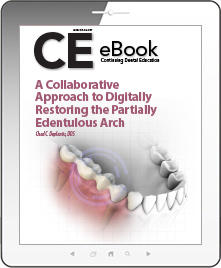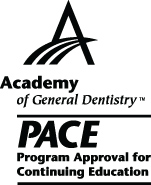CDEWorld > eBooks > A Collaborative Approach to Digitally Restoring the Partially Edentulous Arch


ADA CERP is a service of the American Dental Association to assist dental professionals in identifying quality providers of continuing dental education. ADA CERP does not approve or endorse individual courses or instructors, nor does it imply acceptance of credit house by boards of dentistry. Concerns or complaints about a CE provider may be directed to the provider or to ADA CERP at www.ada.org/cerp/

Approved PACE Program Provider. FAGD/MAGD credit. Approval does not imply acceptance by a state or provincial board of dentistry, or AGD endorsement. 1/1/2023 to 12/31/2028. ID # 209722.
eBook
Released: Wednesday, June 28, 2017
Expires: Thursday, April 30, 2020
A Collaborative Approach to Digitally Restoring the Partially Edentulous Arch
By Chad C. Duplantis, DDS
Commercial Supporter: DenMat
When treatment planning a partially edentulous arch, the dental team is presented with few options. However, implants are becoming increasingly more accepted by patients, and the advent of digital technology in the dental practice has increased treatment options with even greater predictability. Clinicians, along with their laboratories, have taken a collaborative approach as technologies avail themselves to better communication. This approach is demonstrated through a case in which a 54-year-old woman presented with multiple extractions due to acute mandibular osteomyelitis affecting the lower right quadrant is ultimately treated with implant restorations. The resulting treatment is a by-product of a collaborative effort among the surgeon, laboratory and restorative dentist.
LEARNING OBJECTIVES:
- Describe the technological advancements that have enabled a completely digital workflow for implant dentistry.
- Explain why an implant-borne fixed partial denture was the most viable option in the case presented.
- Discuss the benefits of a prosthetically driven, patient-centered approach when restoring a partially edentulous arch.
About the Author
Chad C. Duplantis, DDS
Private Practice, Forth Worth, Texas


